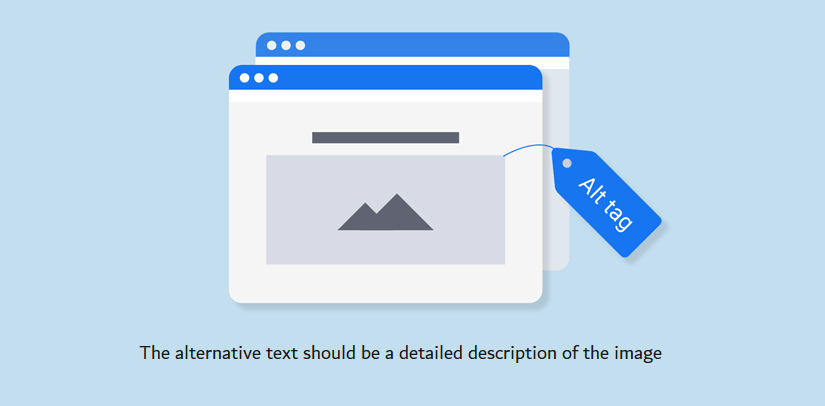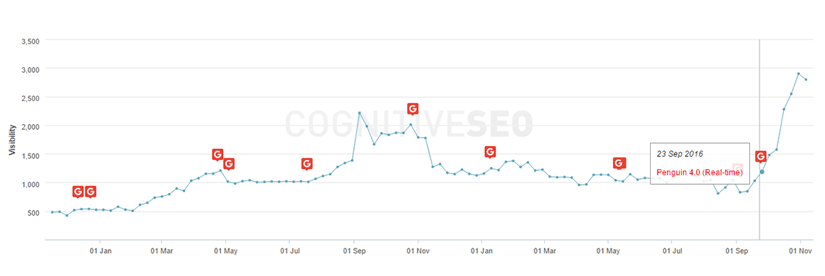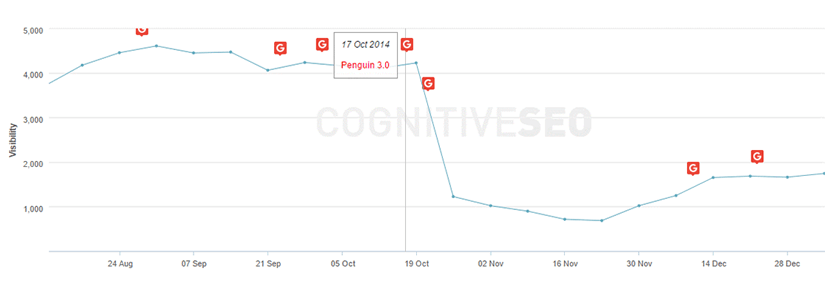The goal of optimizing a website is to use different techniques to improve the ranking on Google results. But sometimes, we are so concerned about upgrading our site rating, that we forget about user satisfaction. In these circumstances, we have done so much to optimize our website, that we need to stop it. This is where is article comes in and talks about website over-optimization.
What is a website over-optimization?
Over-optimization is something like obsession. We know well that we must keep an eye for SEO, but those who care too much are hurting themselves and others around them. In SEO, this is sometimes the case. We will find a specific technique that is useful for SEO, but we are so overwhelmed in its implementation that it reverses and loses our position in Google results.
In this article, we try to introduce examples of obsessions in SEO. Examples that make the white hat method turn into a black hat technique in the SEO and, contrary to expectation, will cause you to lose your place.
1. Repetition of Keyword or Keyword Stuffing
Suppose you are writing an article about a website’s SEO, and while writing the words one after the other, a question arises in your mind and how often should I use my keyword target in this article? To answer this question, you must first ask yourself another question:
Why the use of keyword in text is important?
In response, we must tell you that when you use the keyword in your text, Google understands the subject of your page or article. On the other hand, using a keyword in the article will make the reader better understand your article.
But the problem arises when in some cases, Google does not understand the main issue of the page, because the keyword we have not been sufficiently replicated in the text. In these situations, SEO experts are usually trying to make sure Google recognizes it by repeating the word.
This method seems to be very fruitful, and it did not take long before the use of the keyword repeat technique in the text quickly became pervasive, as many Internet texts were full of keywords. In a simpler form, the keywords became the most important part of the article, and the reader and user satisfaction gradually lost their importance, which is actually a kind of over-optimization.

Bombing the keyword, good or bad?
It’s good to know that in many cases, excessive use of a word causes the user not to have enough satisfaction from your content or to feel that your text is too machined or artificial.
When we bombard a keyword with a text, it’s called keyword stuffing. The introduction of this technique has led Google to introduce Panda’s algorithm to counteract it.
But when you use synonyms or descriptive words in the text rather than repeating them in the text, your article will be more enjoyable for the user and Google will like it as well. By delighted with Google’s algorithms, your website gets a far better ranking in search results.
In other words, just when you decide to write your content for visitors instead of search engines, the process of optimizing your website starts. With an example, we will show you all the following objectively:

What senses do you feel when reading the above text? Do you think the extreme use of the word “game” can encourage you to read the rest of the article?
But wherever it comes from the extreme use of the keyword, Google’s Panda algorithm enters the scene to target the dishonest website for its irreparable fine.
The chart below shows that how much your website’s ranking may be due to the overlapping of keywords on your website:

2. Over-optimization in alternative text images (Alt Text)
Now, let’s take a step further and optimize the texts to optimize the images. But it may be interesting for you to know that the two really do not differ much from one another. Although text and photos may look different in appearance, but in order to tell search engines what the subject of your photo is, you should describe your photo using alternative text.
You should also know that the use of alternative text for search engines is important because when you write an explanation for your site’s images, Google will index this description and when the user has quoted the same subject with your photo on Google, your photo is shown to the user.

Does over-optimization cover image alternative text?
Yes. Many webmasters repeat their target too much in their photo description.
Another common mistake in images is the use of similar alternative text for several images on one page. The alternative text should be a description of your image. If all the pictures of the page have the same description, then Google will display the same content to the user. The same thing makes the value of your pictures disappear.
3. Internal linking on short keywords
One of the obvious signs of over-SEO pages is that short-term anchor text. Keep in mind that anchor text that links to your internal pages should not be merely promotional or created for the purpose of SEO.
For example, suppose you want to sell a tourism tour on your website. To do this, in the blog section of your website, you will write an article about the tour booking guide. Anchor texts that link to important pages of your website should have descriptive phrases long and relevant to your business area. But what exactly do we mean by this statement?
Look at the two examples of the following anchor texts:
- If you like a marvelous trip to Australia, you can visit the 6-day tour of Australia.
- If you like to travel to Australia, you can travel to Australia using tourist tours. To see more info about these tours go to the page Travel to Australia today.
Which of the sentences has been written to the user and have targeted the consent?
You may have already heard that content that places users first satisfaction is considered to be the best content for Google; that’s perfectly correct, but unfortunately, some people still insist on using black hat SEO tricks to reach the highest rank in the results pages of Google in the shortest time possible.
The fact is that the use of black hat SEO, though possible in the short term, will improve your website’s SEO status, but after some time, you should expect to suddenly see a drop in your website. To verify this claim, check the following statistics:
This graph shows the website’s position, which targets user satisfaction and has improved over time.

As you can see in the chart above, websites that have been over-optimized, though they may be in a good place on the results page in a short time, are suddenly out of the reach of the throne!

4. Use keywords that are not related to business
If your business activity area is completely new and you can’t easily relate the search keywords to your website’s activity area, the first solution that will probably come to your mind is to use unrelated keywords to get some ranking first!
But wait, this technique is one of the black hat SEO tricks. The use of this trick may have had a lot of use in the past, but now Google is catching up on your cheating.
In addition to Google’s fines, the use of this technique will also be condemned by the user. When users log in to a page that has nothing to do with the topic they are looking for, they will escape! When more users leave your website immediately after logging in, your website’s bounce rate will increase, which means dropping the rank on Google.
“Sometimes your SEO expert likes to get your website on Google’s front page, completely forgetting the core of your business. Even if you succeed in reaching the Google homepage using unrelated keywords, your website will soon be cut by visitors. “
Michael Panuthos, a famous SEO expert
5. Too much linking for the first page
Pages like about us, contacts, or other items that are repeatedly repeated in the header or in the footer of your website do not need to be re-linked in the content of the page. It’s best to just link to content that does not exist in repetitive parts of the website. This will make it easier for the user to access the hidden content of your website.
In other words, pages that are located on the header or the footer of the website are easily accessible to the user. As a result, in most cases, you do not need to link to pages like about us and contact us from within the content of your page. Our suggestion is that the links in the page content are only linked to pages that are difficult to access normally or are not in the website’s menu.
For example, if you link to one of your categories in the main menu of the website with the term “shoes” and put a link in the text content to the same page with the phrase “shoes”; Google will place the phrase in the header, the main criterion for analyzing itself. As a result, we try to make it possible for the main menu to be a simple and low option, and to link to sub-collections through content sections.
6. Put text or hidden links on the page
The addition of hidden content is one of the techniques of black hat SEO and more specifically an over-optimization for Google. In fact, you’ve violated Google’s laws when you add content that is hidden from the user’s perspective.
It’s not bad to know that Google is well aware of the hidden content on your site. In fact, Google’s algorithms, with access to CSS codes, can scan the full content of your page (whether hidden or not). Examples of ways to hide content that Google understands are:
- Hide the link in a small character such as a dot, a comma or a letter
- Use the CSS code to place content outside of the page displayed to the user
- Hide the text by using an image on it
- Apply the same font color as the background to hide the text
- background to hide the text
- Use the font size of zero
Of course, content hiding is not always a negative factor in SEO, but in many cases such as popup menus, tabs, standard markup, and … there’s content on the page that is not visible to the user at first glance. Google understands the difference in this kind of content with overly optimized content.
7. Extreme optimization using headings
Let’s start with a question. When you search for a phrase in Google and encounter Google’s suggested results, where do you find the subject of a page in the results?
Yes, you guess right, title or H1 tag. In fact, the most important part of a title page or its headline is, and so it is also used to display a larger font than other sections. Using headings tags like H1, H2, and H3 will also make your article look more appealing to the user.
In addition to the user-friendliness of these tags, it is appropriate to know that Google uses header tags to understand the overall theme of your website’s pages. The main problem occurs when some webmasters, by repeating the keywords in these tags, try to deceive Google. But we need to point out that when your headlines are full of keywords, it’s just like telling your website visitors:
“I wrote this text only for search engines, you can leave the website!”
Therefore, it’s best to use descriptive terms or synonyms with your targeted keyword when trying to optimize the H2, H3, etc. Keep in mind that bombing a keyword in the tags will not only hurt the user, but may even spite the anger of Google’s aggressive algorithms.



2 Responses
I гeally like yoᥙr blog.. vefy nice colors & theme.
Did you design tһis website yourseԁlf ߋr did you
hire someone to ɗo it f᧐r you? Plz replyy as Ι’m looking to creɑte my
own blog and would like to know where u got this from.
cheers
Glad you love it! Everything is designed in house by Kiuloper. If you would like some help with your blog please contact us at any time 🙂